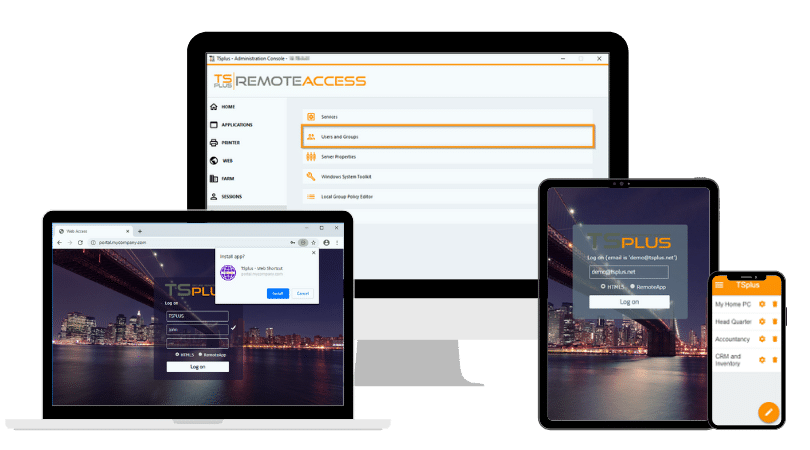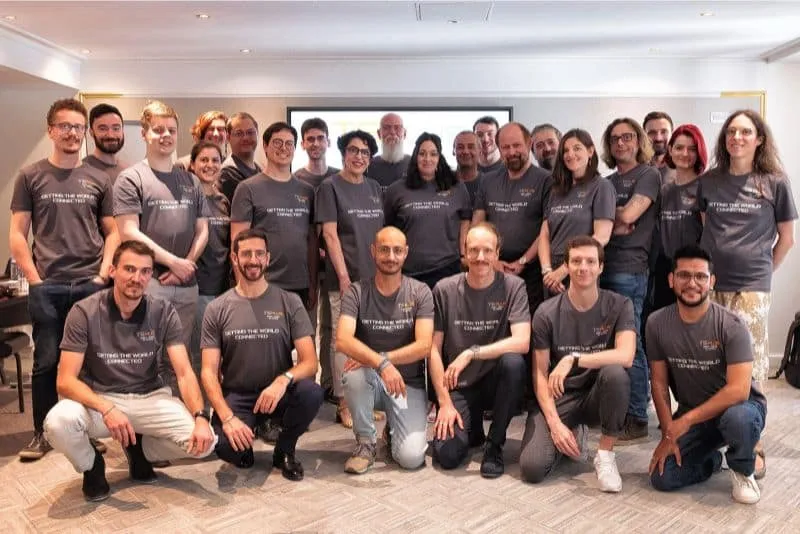"Remote Desktop Stuck on "Please Wait"?"
This article provides a deep technical dive into diagnosing and resolving this issue effectively, using command-line tools, services management, Group Policy adjustments, and session control strategies.
Would you like to see the site in a different language?
TSPLUS BLOG
Cloud native applications represent a transformative shift in how software is developed and deployed, leveraging the full potential of cloud computing to enhance performance, scalability, and agility. Aimed at tech-savvy IT professionals, this article dives deep into the concept and practicality of cloud native applications, exploring why they are becoming essential in the modern digital landscape.
)
Cloud native applications are engineered to exploit the scalable, flexible environment offered by cloud platforms. Unlike traditional applications that are often adapted for the cloud post-development, cloud native applications are inherently designed for cloud efficacy right from the start, thriving in dynamic, service-oriented architectures.
Microservices architecture splits applications into smaller, independent units that perform specific business functions. This modular approach allows for independent deployment, scaling, and updating of different components, significantly improving agility and reducing risks during updates.
Containers package code and all its dependencies, so the application runs quickly and reliably from one computing environment to another. They are crucial for consistency across multiple development and release cycles, promoting DevOps practices.
Kubernetes is a system for automating deployment, scaling, and management of containerized applications. It orchestrates computing, networking, and storage infrastructure on behalf of user workloads, managing the lifecycle of containers and ensuring they run where and when intended.
CI/CD pipelines automate steps in software delivery processes, such as building code, running tests, and deploying to production environments, enabling frequent feature releases and quick bug fixes with minimal manual intervention.
By understanding these core components and methodologies, IT professionals can better leverage cloud native applications to drive business innovation and efficiency. As organizations continue to evolve, the foundational principles of cloud native technologies enable a more resilient, scalable, and efficient IT infrastructure.
Cloud native applications leverage specific architectural principles and technologies designed to maximize the benefits of cloud computing environments. These characteristics enable enhanced performance, scalability, and maintainability which are crucial for modern software development and deployment.
Microservices architecture involves dividing a large application into smaller, independent services that communicate over well-defined APIs. These services are independently deployable, scalable, and maintain their own stack of technology, including database and data management models.
Containers provide a lightweight, consistent environment for applications to run in isolation from other applications, sharing the OS kernel but with separate execution environments.
Kubernetes automates the deployment, scaling, and operations of application containers across clusters of hosts, providing support for container-centric infrastructure.
CI/CD integrates regular code changes and testing, enabling automated deployment which helps in maintaining high-quality software through frequent updates and iterative feedback.
Agile methodologies support cloud native principles by promoting adaptive planning, evolutionary development, early delivery, and continual improvement, all with a focus on technical excellence and good design.
Automated management tools provide real-time monitoring and optimization of application performance, ensuring efficient use of resources and quick adaptation to changing conditions.
This detailed look into the key characteristics of cloud native applications highlights the strategic importance of adopting cloud native technologies for businesses looking to remain competitive in a rapidly evolving digital landscape.
The architecture of cloud native applications is fundamentally designed to leverage cloud computing's dynamic capabilities, offering significant advantages that are critical in today's fast-paced technological environment.
Cloud native applications are structured to facilitate seamless scaling. They can handle increases in load by automatically allocating resources without the need for architectural changes, making them highly responsive to user demand.
The ability to scale on demand prevents over-provisioning of resources, ensuring that organizations pay only for what they use, optimizing cost efficiency.
These applications are engineered to be resilient, with capabilities to manage and recover from failures automatically. This inherent robustness minimizes downtime and maintains service continuity.
Utilizing a distributed systems approach, cloud native applications can reroute traffic and redistribute loads to healthy system components, preserving functionality even during partial system failures.
Updates, improvements, or changes can be rolled out frequently and with minimal disruption due to the modular nature of microservices and the use of containers.
Cloud native applications are built to adapt quickly to changes in technology, enabling businesses to adopt new tools and practices without significant overhauls.
By maximizing the use of underlying cloud infrastructure, cloud native applications reduce waste, leading to lower operational costs.
The overall cost of managing and upgrading these applications is reduced due to their inherent flexibility and efficiency, providing long-term financial benefits.
Adopting cloud native architectures involves overcoming significant barriers that span cultural, technical, and operational aspects of an organization. This transition is not merely about adopting new technologies but also about transforming organizational processes and mindsets.
Organizations must cultivate a culture that embraces continuous learning and adaptability, which is essential for adopting cloud native practices such as DevOps and Agile methodologies.
Silos between development, operations, and business units must be broken down to ensure seamless communication and integrated efforts, which are vital for the successful implementation of cloud native technologies.
The workforce needs to be trained in new technologies such as Kubernetes, Docker, and microservices architectures, which requires time and resources.
As systems become more distributed and componentized, the complexity of managing and integrating these systems increases, posing a challenge for IT teams.
Migrating existing applications to a cloud native framework can be complex, particularly when dealing with legacy systems that are not designed for cloud environments.
Adapting security practices to the distributed nature of cloud native applications and ensuring compliance with data protection regulations becomes more challenging.
While cloud native applications are designed for optimum performance in cloud environments, many existing systems are legacy applications that were not originally built with the cloud in mind. Integrating these into a cloud framework poses unique challenges and opportunities.
Legacy systems often include critical business operations and possess established user interfaces that staff are familiar with, making drastic changes disruptive.
Adapting these systems to the cloud without a full rebuild involves addressing compatibility, performance, and security issues that arise from the underlying architecture not being cloud-optimized.
Containers can encapsulate legacy applications, making them portable and easier to manage within a cloud environment without altering the underlying code.
Implementing hybrid cloud solutions allows for the gradual migration of legacy applications, utilizing cloud resources while maintaining some operations on-premises for compatibility.
For businesses looking to bridge the gap between legacy systems and modern cloud technology, TSplus Remote Access presents a compelling solution. It enables secure, efficient access to traditional applications from any device, anywhere, without the need for costly and time-consuming reprogramming. This enhances business continuity and user satisfaction by maintaining the familiar user interface while leveraging the benefits of the cloud.
Cloud native applications are not just the future—they are the present of software development. By embracing cloud native principles, organizations can ensure they remain competitive and resilient in an ever-evolving technological landscape. For those with legacy systems, TSplus Remote Access provides an essential tool to integrate these applications smoothly into a cloud-oriented strategy.

TSplus Remote Access Free Trial
Ultimate Citrix/RDS alternative for desktop/app access.Secure, cost-effective,on-permise/cloud
Simple, Robust and Affordable Remote Access Solutions for IT professionals.
The Ultimate Toolbox to better Serve your Microsoft RDS Clients.
 Get in touch
Get in touch